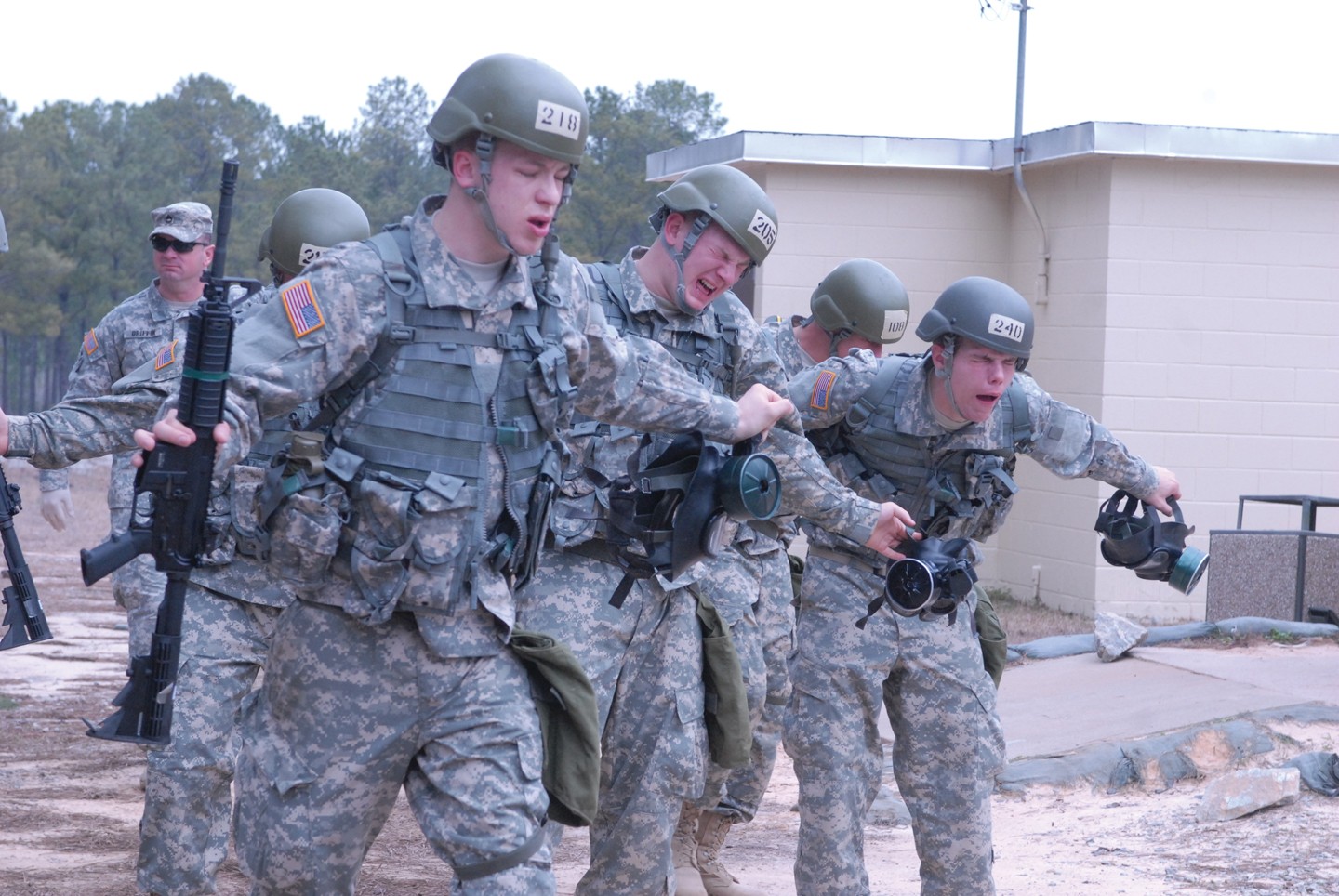The gas chamber at Brittin Range goes by many names - house of horrors, confidence chamber, chamber of horrors - but no matter what Soldiers call it, they all pass through its walls during Basic Training.
Soldiers in C Company, 1st Battalion, 50th Infantry Regiment, emerged from the gas chamber with runny noses, watery eyes and burning throats during training Wednesday.
The goal of the training is to teach Soldiers how to react to chemical and biological weapons and to help them gain confidence in their equipment, said SSG Terrance Vaughn, 2nd Battalion, 29th Infantry Regiment, a gas chamber instructor.
"We try to instill in them that even though we don't have this type of threat all the time, Soldiers could run across something suspicious in Iraq or Afghanistan, like a chlorine bomb, and they need to know how to react," Vaughn said.
Soldiers enter the chamber with their gas masks on, then remove them for approximately one minute and recite their name and the last four digits of their social security number. The gas causes a burning sensation but has no lasting ill effects. After Soldiers come out of the chamber, they run laps with their arms out, which helps expose their skin to the air and remove any traces of the contaminant.
The exercise gives Soldiers an idea of the symptoms they would experience in an attack of nerve gas or other biological agent, Vaughn said.
"Taking their masks off inside shows them that in the event of a chemical or biological attack, they should have their mask on," he said. "It allows them to gain confidence in their mask."
For many Soldiers, the experience was not as bad as they had anticipated.
"It was definitely a lot better than I thought it was going to be," said PVT Jeremy Dozier. "At least 10 of my friends have gone through the military and they've talked about the gas chamber. I thought it was going to be a hellish experience, but if you can keep calm and do what they tell you to do, you'll be all right."
"I expected worse," said PFC Christopher Thomas. "They call it the house of horror for a reason. I thought I was going to come out with everything running out of me, and that I would get sick. I didn't. It just burned and I couldn't see very well."
Teamwork was key in getting through the gas chamber successfully, said PFC Randy Novack.
"After you take your mask off the second time to come out, you've got to hold onto your buddy in front of you," he said. "It's your buddy who's going to guide you out."
For PV2 Justin Bruce, the training was an opportunity to push himself to new limits and to gain strength for the future.
"You may have thought (the chamber) was your limit, but once you make it through, you realize you can do more," he said. "So if you don't think you can make it when you're in Iraq, just think back on this - you didn't think you'd be able to make it through, but you did."
The gas chamber training played an important role in preparing the Soldiers for situations they will encounter after Basic Training, Dozier said.
"Here they're tough on you," he said. "But, when you're out in Iraq or Afghanistan, you've got to act quickly and proficiently, and that's what they teach you to do. Everything you do here, it teaches you for the real thing, because that's what we signed up to do - we signed up to serve this country at war."


Social Sharing